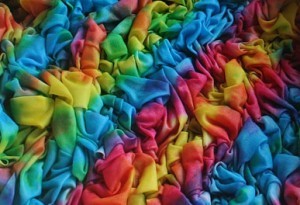
Pigment printing is one of the essential parts of the textile industry. It refers to the dyeing of clothes and dress materials. There are various types of dyes available in the market which is used for pigment printing. Resistant pigment, pigment dye ink,solvent dyes, ink pigments, resistant pigment, printing ink pigments and artists pigment are some of the popular pigments available.
Pigment printing is the most popular technique used on cellulose fibres. There are various benefits associated with the pigment printing process. Some benefits are:
- High quality printing: Pigment printing offers brighter printing than the other styles of printing. Moreover, the colour is permanent with this process and do not get off just with one wash.
- Easy Technique: Pigment printing is an easy dyeing process. The colour matching is fast and easy with pigment printing. Moreover pigment printing is possible without making subsequent washes. Also if there is any issue in the colour fabrication, it is easily identifiable in pigment printing technique.
- Affordable Technique: Pigment printing is a budget friendly process. As this process ensures less wash off, quick sampling and is a high speed technique, more printing can be done at less time. You also do not need high end machinery for applying this technique. All these features make pigment printing economical.
Multiple Uses:
The pigment printing process can be applied on both natural and synthetic fabrics. It is a simple process and hence you need not always require technical experts for the job. Pigment printing can also be used to dye various kinds of fibres, like glass fibre, PVC and imitation leather.
Last but not the least; pigment printing is a reliable dyeing process in which you get enhanced quality products with least labour and equipment costs.
Although there are several good aspects of thepigment printing method, the process is not error free. Some of the issues that you may face while using this technique are:
- Pigment printing is not controllable for binder film.
- Due to large number of cross links, it is usually difficult to handle pigment printing.
- Pigment printing uses heavier items and hence the rollers get adversely affected in the process.
- Pigment printing cannot be applied directly on the fabrics and hence binders are used for the same. The use of these additional devices results in a coating over the fabric.
- If there is any error in the first phase of printing, the second time use of pigment printing is not that effective. You do not get the same colour effect when used repeatedly over the same material.
Hence there are both good and bad effects of Pigments for ink, but its strong colour effects have gradually made it popular now -a-days. From polyester and viscose dress materials to printed curtains, towels and garments in need of soft touch, pigment printing is gradually making its mark in all types of fabric. Hence go for the modern technique of pigment printing and enjoy quality good at a reasonable rate.